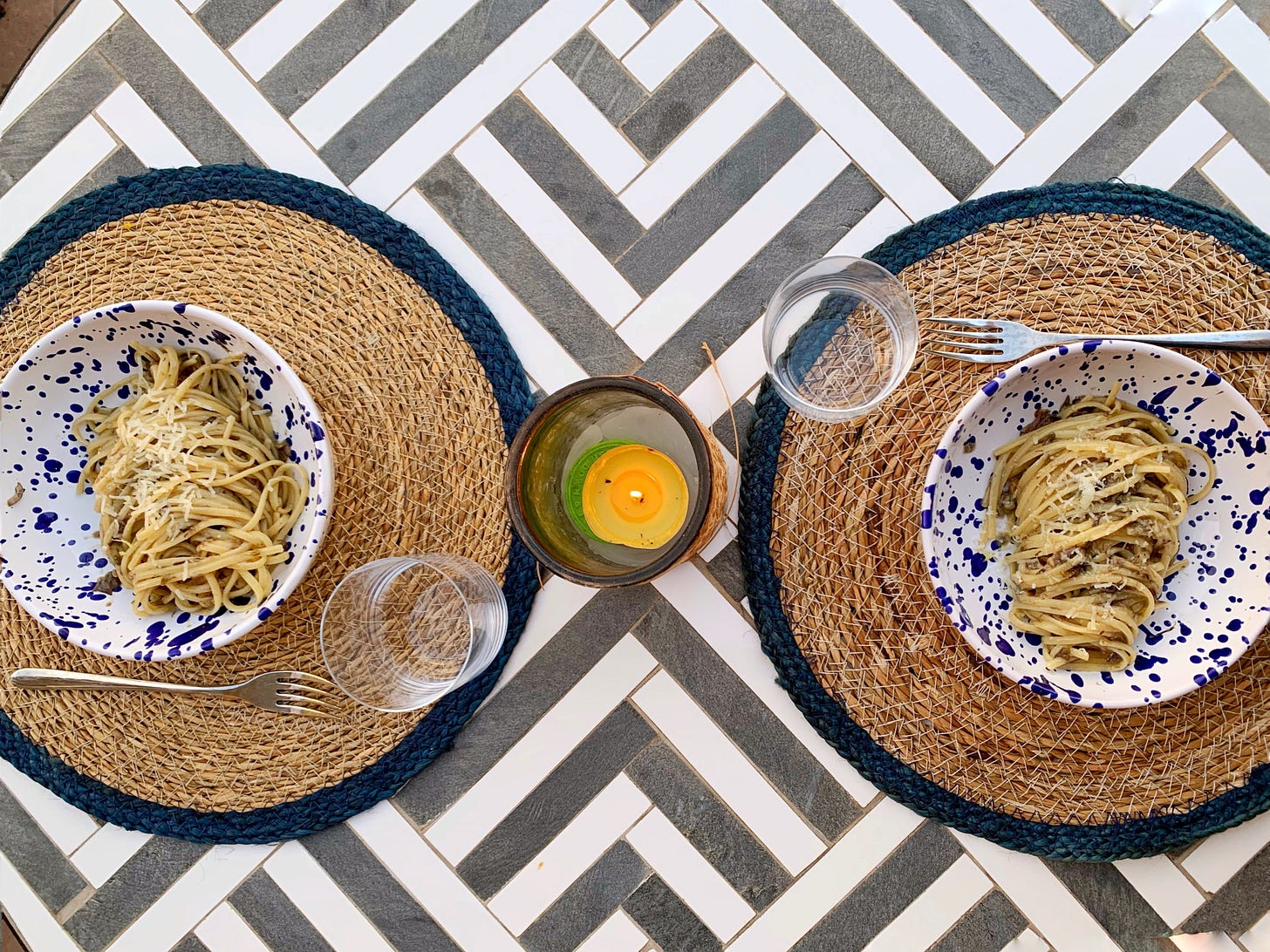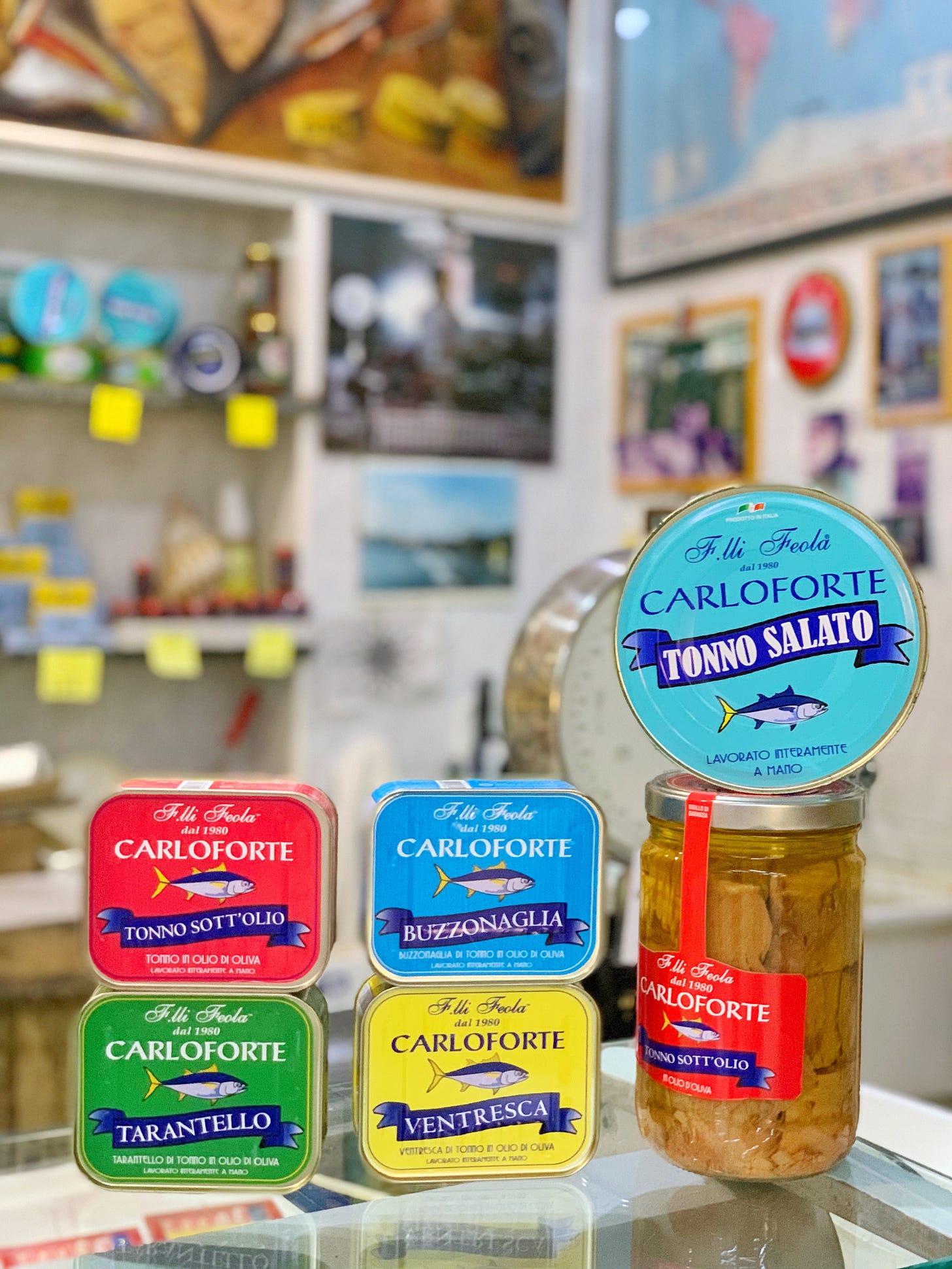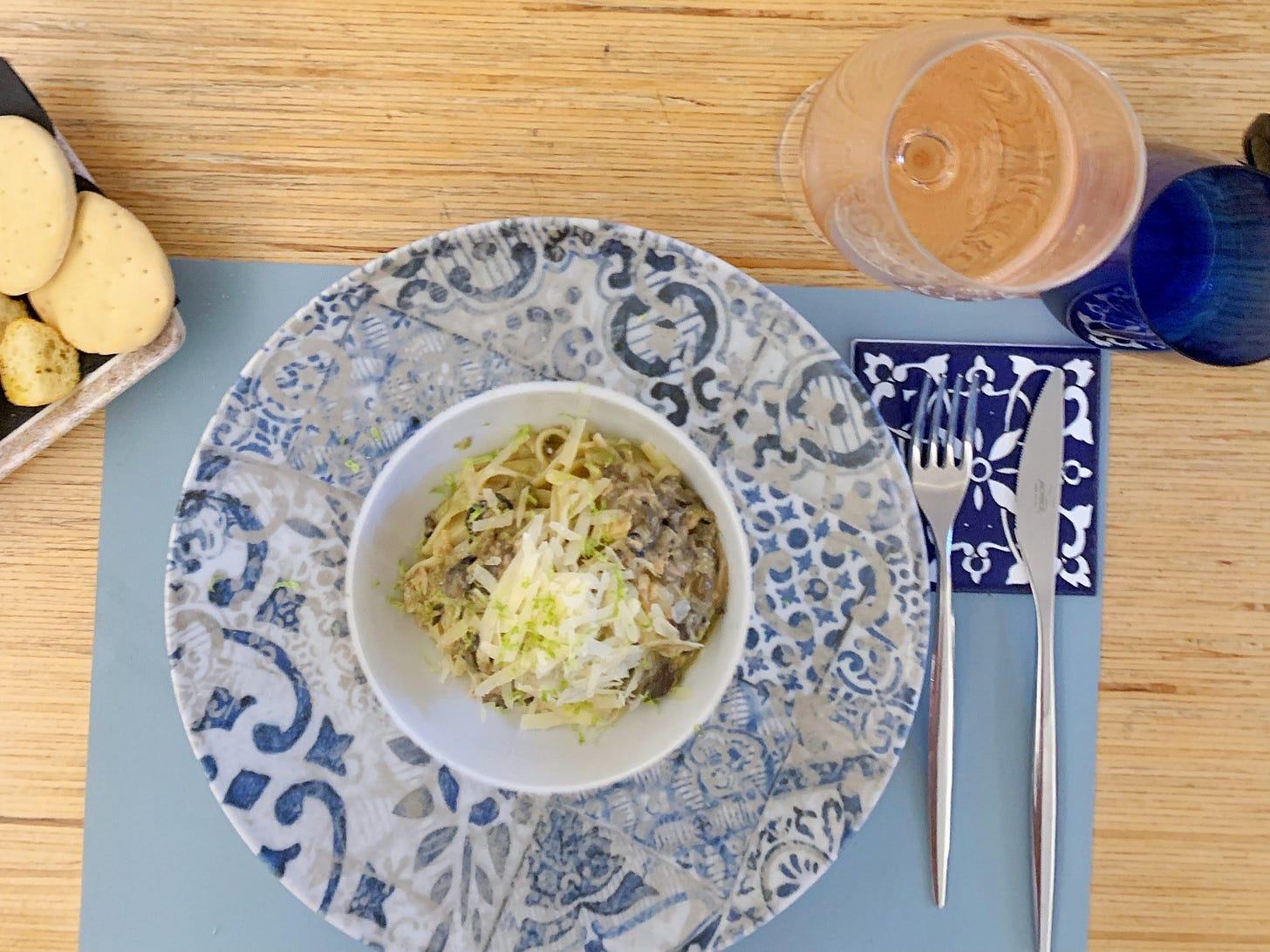This Sardinian Pasta Isn’t in the Canon of Regional Italian Classics—And You Can Make It With Pantry Staples
Issue #36
“Have any vacation meals inspired you to make your own version at home?” This question was put to me recently in an interview with
, a great Substack by my friend and former editor Teddy Minford. I don’t know about you, but I always seem to find culinary inspiration when I travel. I love to taste the local specialties wherever I go and often try to replicate them at home.One such speciality is linguine alla Nicolo, a dish I ate in Sardinia last summer and cannot stop thinking about ever since. Unlike most of my culinary repertoire, this pasta isn’t part of the canon of regional Italian classics. As far as I know, the only place you can eat it is Da Nicolo in Carloforte, the main town on the Isola di San Pietro, a tiny island off the coast of Sardinia. Or you can make it at home.
A bit of background: Carloforte is a charming little under-the-radar town known for tuna fishing. Far from the glamorous Costa Smeralda, it’s one of those magical Italian seaside destinations that’s lively but not completely overrun by tourists. It was settled by Ligurian sailors in the 18th century, which is why the buildings are painted pastel shades of pink, blue, and yellow.
Carloforte lies on the path that the prized bluefin tunas take when they migrate through the Strait of Gibraltar and go to the waters around Sardinia and Sicily to spawn. The restaurants in town practically worship this fish and serve tuna in more ways than you can imagine: raw, cured, smoked, in sandwiches and pasta, or as a main course.
Da Nicolo is one of the best restaurants in town. In keeping with the island’s general vibe, it’s elegant but unpretentious. It’s one of just two restaurants in Carloforte that’s recommended by the Michelin guide, but it lacks a star and the fine dining trappings that come with them. It’s run by a family that’s been in the restaurant business for three generations. If you go, you’re likely to see Nicolo and his sons, one of whom runs Pomata Bistro just around the corner.
Needless to say, when Marco and I went last summer, I had to try the signature linguine alla Nicolo, which has been on the menu since 1973. The dish is made with a simple combination of tuna, olives, capers, pecorino cheese, and lemon zest. Though there’s an unspoken rule in Italy about not putting cheese on seafood dishes, there are some notable exceptions and this is one of them. I recently made my own version at home and it was even more delicious than I remembered—the perfect light summer pasta. Here’s how I did it.
Linguine alla Nicolo
Serves 2
Ingredients:
200-250 grams (about 7-9 ounces) linguine
Olive oil
1 large can (about 100 grams or 3.5 ounces) tuna
2-3 tablespoons olives (I use taggiasca olives but other black olives such as kalamata would work)
2-3 tablespoons capers
40-50 grams (about 1.5 ounces) pecorino romano or sardo
Zest of 1/2 lemon
Salt and pepper to taste
Directions:
Put a large pot of water on the stove and bring it to a boil, then add about a tablespoon of salt. In the meantime, pit the olives and chop them roughly into little pieces. Drain the capers and chop them too. Grate some pecorino and set it aside. I never measure the cheese precisely, but typically use roughly 40-50 grams (1.5 ounces). You can use more or less, depending on your preference.
Pour some olive oil into a large pan over a low flame. Add the tuna to the pan, breaking up any large pieces. For this recipe, I used a can of buzzonaglia tuna that Marco and I bought in Carloforte, but you can use whatever tuna you prefer. (Buzzonaglia is the least prized cut of tuna, taken from the parts that stick to the spine of a large bluefin tuna, and it’s typically used in pasta sauces.) Add the chopped olives and capers to the pan and season with a pinch of salt. Stir it around and keep it on a low flame.
Toss the pasta into the pot and set a timer for three minutes less than the cooking time on the package, stirring it around from time to time so it doesn’t stick together. When the timer goes off, reset it for three minutes and transfer the pasta to the pan with a spaghetti spoon. Ladle some of the cooking water into the pan and turn up the heat so the sauce starts to bubble.
This is the crucial time when the pasta and the sauce will come together, so you want to stir everything around vigorously with a wooden spoon and toss the pasta so the sauce coats it evenly. Add the pecorino so it will start to melt, creating a smooth amalgamation. Wait until the very end and then add the lemon zest and toss it again. Garnish with a bit more pecorino and lemon zest and serve.
Further Reading
In case you missed it or if you need a refresher, check out issue #16, which has my tips for making perfect pasta every time.
Read more about Carloforte and the tuna there in this article I wrote for Food & Wine about how it’s an under-the-radar heaven for foodies.
Find more of my travel tips in issue #31, all about why you should plan a trip to Sardinia.
Check out the aforementioned interview with me in
here.







